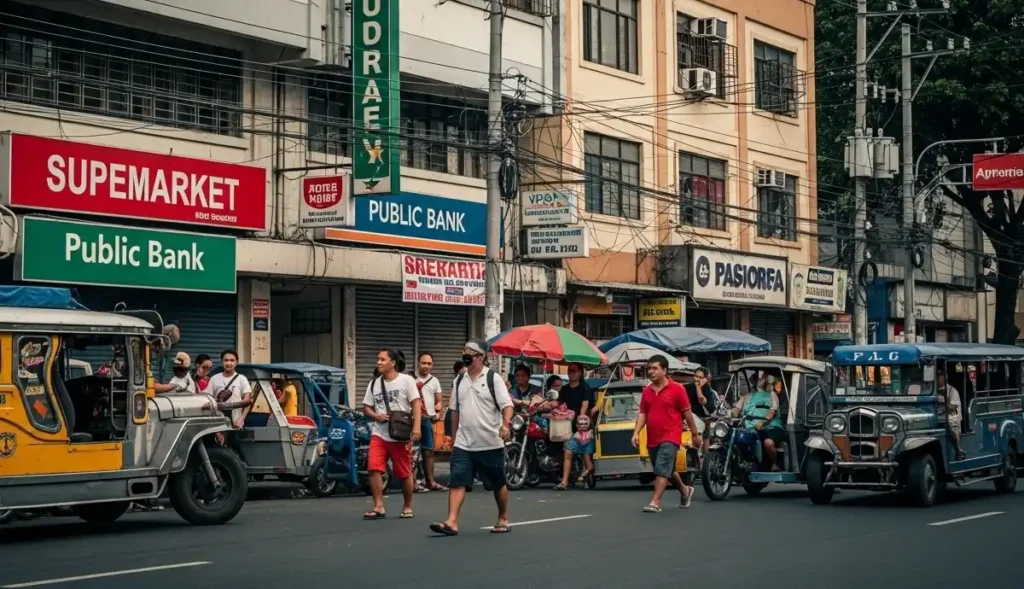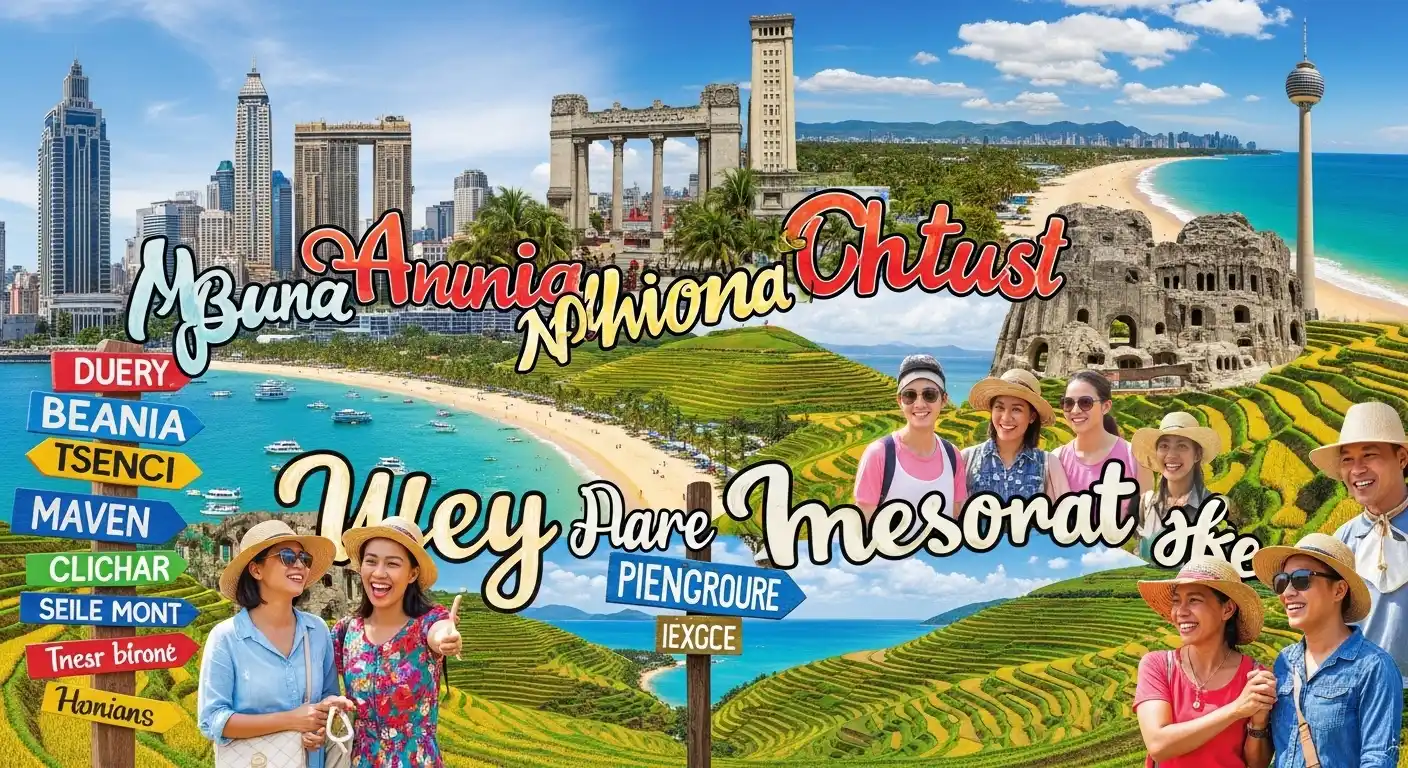Do People Speak English in the Philippines? Full Guidance in 2025
Yes, English is widely spoken across the Philippines. It is one of the country’s official languages and is commonly used in education, business, tourism, and daily communication.
The Philippines is one of the largest English-speaking nations in Asia. English is an official language and plays a key role in education, commerce, and law.
- English in the Philippines: official language used daily in schools, media, and business.
- Most Filipinos: especially in cities and tourist spots.
- English in countryside: locals understand and speak basic phrases.
- Manila locals: speak English fluently in shops, hotels, and streets.
- Filipino English: unique accent, style, and expressions like “comfort room.”
- English for travelers: easy to read signs, ask directions, and get help.
- Common misconceptions: American English isn’t the only correct form.
- English learners and teachers: high fluency, low cost, and friendly culture.
Most of the population has some fluency, and many Filipinos speak English confidently.
English is used in both big cities and small villages. In places like hotels, restaurants, bars, and tourist attractions, people are comfortable communicating in English.
Even in the countryside, many locals can understand and speak at least basic English.
The country’s strong English skills come from its history as a colony of the United States from 1898 to 1946.
Today, the younger generation speaks English with ease, and foreigners find it easy to travel and interact across the country.
How Common Is English in the Philippines Today?
English is widely spoken in the Philippines, with many Filipinos being fluent, especially in cities and business areas.
Many people in the Philippines use English every day. It is one of the country’s official languages and is taught in schools from a young age.
In cities, workplaces, and tourist areas, it’s very common to hear people speak English fluently.
A 2023 survey by the Social Weather Station revealed that nearly half of all Filipinos are highly fluent in English.
This makes the Philippines a great place for business, travel, and connecting with locals.
The country continues to be a top destination where communication in English is easy and natural.
Do They Speak English in the Countryside in the Philippines?
Most people in the Philippine countryside speak at least basic English, so travelers can comfortably ask directions, shop, and chat with locals in nearly every village and small town.
English is part of daily life from bustling big cities to quiet small towns and farming villages.
Children learn it at school, shopkeepers use it with visitors, and even market vendors often mix English phrases into lively conversations.

Because the language is so common, tourists find it easy to order food, book transport, and share stories with new friends in every area they explore.
Beyond the well-known touristy places, you’ll still find a welcoming smile and a helpful answer in English.
In truly remote spots, locals may switch to friendly gestures and simple words, yet communication stays smooth thanks to warm body language and a shared eagerness to connect.
With a patient attitude and a cheerful hello, you’ll quickly discover that English remains a trusted bridge across the Philippine countryside.
Where You’ll Hear English in the Philippines?
You’ll hear English widely across the Philippines, especially in schools, supermarkets, restaurants, and banks, as it is one of the country’s official languages and used in daily communication.
English is spoken every day across the Philippines, making it easy for locals and visitors to communicate.
As an official language, English is used in schools for teaching, in supermarkets for signs and labels, and in restaurants for menus and service.

Many people also speak English at banks, offices, and even during casual conversations.
The Philippines is the third-highest English-speaking country in Asia, just after India and Singapore.
This strong use of English makes the country friendly for tourists and easy to navigate.
Filipino English: Accent, Style, and Vocabulary
Filipino English: Accent, Style, and Vocabulary reflects a creative blend of American and Spanish influences, with unique local expressions that give it a distinct sound and identity.
It is shaped by history, culture, and everyday life. Many Filipinos speak with an American or Spanish accent, depending on where they grew up or what they were exposed to.
This makes the way they speak English unique and easy to recognize.
What makes Filipino English more special are the everyday colloquialisms. For example, people often say “open the light” instead of “turn on the light”.
A public restroom is commonly called a “comfort room”, and McDonalds is fondly known as “McDo”.
These creative word choices are part of the style and vocabulary that set Filipino English apart and show how language adapts to local culture.
English for Travelers in the Philippines
English for Travelers in the Philippines is easy and convenient because English is widely spoken across cities, tourist areas, and public places, helping travelers communicate and navigate smoothly.
English is one of the country’s official languages and is used in schools, the media, and the government.
Most Filipinos speak English fluently, especially in cities, tourist spots, hotels, and airports.
This makes it simple for travelers to read signs, ask for directions, and talk to locals. English is also common in public services, so visitors can get help easily.
Learning a few local phrases is still appreciated, but travelers will have no trouble communicating during their trip.
Common Misconceptions About English in the Philippines
Common Misconceptions About English in the Philippines include beliefs such as American English being the only correct form, or that English alone leads to economic success.
In reality, the Philippines embraces multiple languages, and both English and Filipino contribute to knowledge, identity, and growth.
Common Misconceptions are often based on outdated beliefs.
Some people think American English is the only correct way to speak, but many forms of English are valid and useful.
English in the Philippines has developed its own unique style, shaped by culture and local needs.
Others believe that English is the cure for all economic ailments, but success also comes from skills, hard work, and creativity—no matter the language.
Filipino and English are not in opposition; they work together to build a strong, bilingual society.
Both bring valuable knowledge and support learning in different ways.
Why the Philippines Is a Top Destination for English Learners and Teachers?
It is because of its high English proficiency, friendly locals, affordable living, and strong demand for English education, making it ideal for both students and teachers.
It also lies in its unique mix of language fluency and welcoming culture.
English is widely spoken across the country, and many Filipinos are comfortable communicating in it every day. This helps learners feel supported and confident while practicing.
The country also offers many teaching opportunities for foreign educators.

With a strong demand for English, schools and training centers are always looking for qualified teachers.
It’s a rewarding experience for those who want to make a difference and grow professionally.
Living in the Philippines is also affordable, making it attractive for long-term stays.
The warm climate, beautiful tropical locations, and rich cultural diversity create a vibrant atmosphere.
Whether you’re a learner or a teacher, the Philippines provides a positive, enriching environment for mastering English.
Do people Speak English in Manila?
Yes, English is widely spoken in Manila, making it easy for visitors to communicate with locals in everyday situations.
Many people in Manila speak good English, especially in areas like hotels, restaurants, bars, and local shops.
You’ll find that shopkeepers, staff, and even street vendors often use English in daily conversations.
Because English is one of the official languages of the Philippines, many Filipinos grow up learning it.
The country is recognized globally as one of the largest English-speaking nations, with a large population fluent in the language.
Whether you’re travelling for business or fun, you’ll have no problem getting by using English.
From making a joke to discussing something more serious, communication is smooth thanks to the country’s strong focus on English fluency.
What Percentage of Filipino Speak English?
About 55% of Filipinos speak English, and it is one of the official languages of the Philippines, making communication easy in schools, offices, and public places.
The Philippines is a Southeast Asian country made up of many islands where over 100 languages are spoken.
Among these, Filipino and English are the two official languages. Tagalog, a dialect of Filipino, is the most common in daily use.
According to a 2023 survey, 55% of Filipinos can speak English, while most others can at least understand it.
English is widely used in education, business, and government, which helps connect people across different regions and dialects.
History of English language in the Philippines
The history of English language in the Philippines began when the United States took over from Spain in the early 20th century.
During the American colonization, English was introduced as part of public education reforms. On January 21, 1901, English was officially used as a medium of instruction in public schools.
Before this, many indigenous languages were spoken across the Philippines. With the arrival of the Americans, English gradually became part of daily life.
Over time, Filipinos embraced the language, making it one of the country’s official languages.
Today, English is used in classrooms, media, law, and international communication, reflecting a strong legacy that continues to grow.
Conclusion
English is spoken throughout the Philippines by the majority of the population. From big cities to small villages, people use English in daily life.
It’s one of the country’s official languages and is taught in schools, used in business, and spoken at tourist spots.
You will find hotel staff, restaurant workers, and even vendors at tourist attractions speaking English with ease.
This makes the Philippines a friendly and accessible place for anyone visiting, moving, or working there. Communication is smooth, and the welcoming nature of locals makes the experience even better.
FAQs – English in the Philippines (2025)
Can I speak English in the Philippines?
Yes, you can speak English in the Philippines. It is one of the official languages. People use it every day in schools, shops, and public places.
Can you get around the Philippines with English?
Yes, you can travel around the Philippines using English. Signs are in English. Locals understand and speak it, especially in cities and tourist spots.
How fluent are the Filipinos in English?
Many Filipinos speak English well. About 55% are fluent. Most others understand and use it in daily life.
Can English live in the Philippines?
Yes, English speakers can live in the Philippines easily. People speak English in schools, banks, and markets. Life is comfortable for foreigners.
Do I need a visa to the Philippines?
Visa rules depend on your country. Many tourists get 30 days visa-free. Check with the Philippine embassy before you travel
Is English spoken a lot in the Philippines?
Yes, English is spoken a lot. It is used in schools, offices, and shops. Most people understand it well.
Is English official in the Philippines?
Yes, English is an official language. It is taught in schools and used in government and media.
Where in the Philippines do they speak English?
People speak English across the whole country. It is common in cities, towns, and even small villages.
How do you say “hello” in Filipino?
You say “hello” as Kumusta in Filipino. It is a friendly way to greet someone.
Disclaimer
The information in this article is for general travel and educational purposes only. Please verify visa rules and local updates with official sources. This article is provided by traveldrizzle.com to help you enjoy a smoother, friendlier journey in the Philippines.






